Switching to a plastic-free lifestyle might seem like a small step, but it can make a big difference for our oceans and its many creatures. Every year, millions of tons of plastic end up in marine environments, putting sea turtles, seabirds, and countless other species at risk. By making a few simple swaps in your daily routine, you can help reduce the plastic waste that threatens marine life. Here are 13 practical changes you can start making today.
1. Reusable Water Bottles
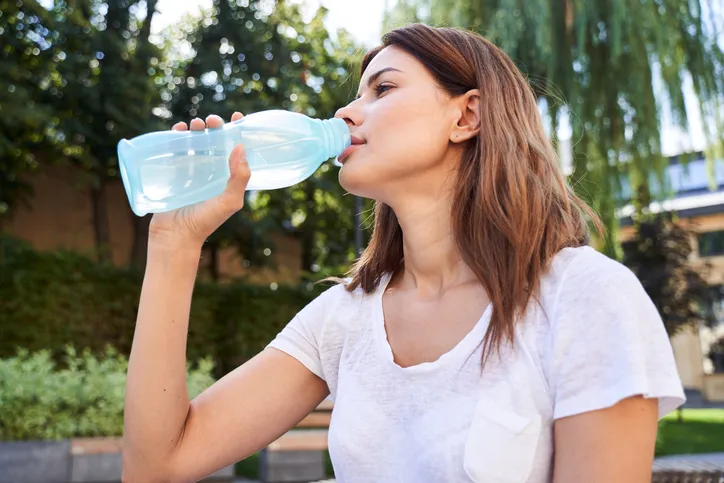
Swapping your single-use plastic water bottle for a reusable one is a straightforward change. Not only does this cut down on plastic waste, but it also keeps your water colder for longer, especially if you choose an insulated model. According to a study by the Ellen MacArthur Foundation, if current trends continue, there could be more plastic than fish in the sea by 2050. Using a reusable water bottle can be a small but effective way to counter that trend. Plus, it’s more economical in the long run, saving you the cost of buying bottled water daily.
A stainless steel or BPA-free plastic water bottle can be a convenient and eco-friendly choice. They’re easy to clean, durable, and come in a variety of styles to fit your personal taste. Whether you’re at the office, the gym, or hiking, a reusable bottle makes staying hydrated both stylish and sustainable. By making this one change, you’re making a big impact on reducing plastic pollution. Remember, every little bit helps when it comes to protecting our oceans.
2. Cloth Shopping Bags
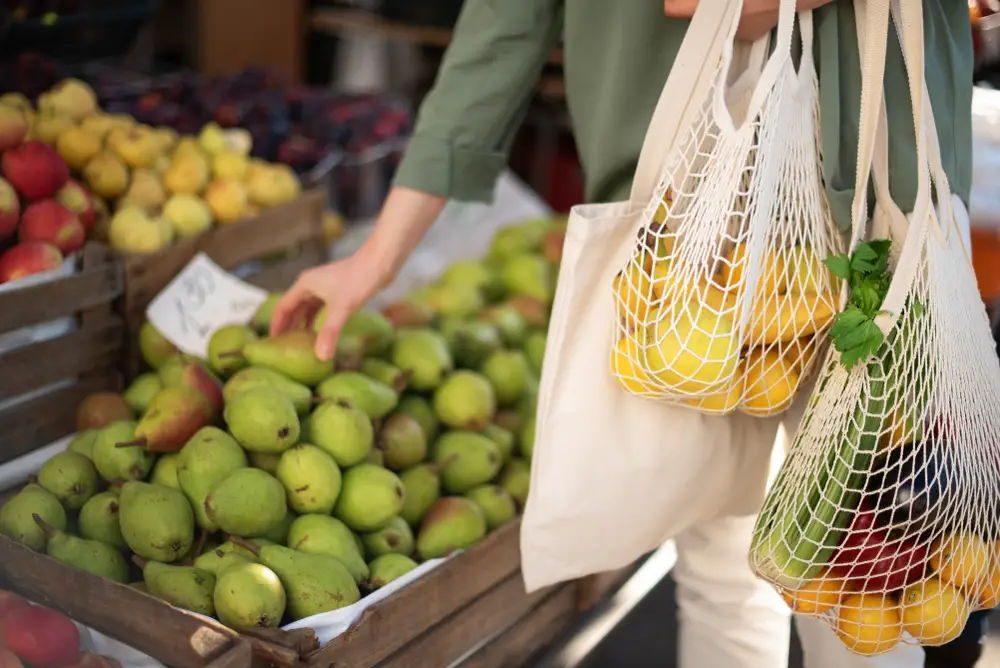
Plastic bags are a huge contributor to marine pollution, often ending up in the stomachs of sea creatures. Switching to cloth shopping bags is an easy way to minimize this impact. Cloth bags are sturdier and can hold more items than their plastic counterparts, making your shopping trip more convenient. They’re also machine-washable, so you can keep them fresh and clean after each use. Many stores now even offer discounts for bringing your own bags, adding an extra incentive to make the switch.
Cloth bags come in a range of sizes and styles, so you can find one that suits your needs and personality. Keep a few in your car or by your front door, so you don’t forget them on your way out. Reusing cloth bags reduces the demand for single-use plastics, which helps decrease plastic production and waste. It’s a simple habit that, over time, makes a noticeable difference. By using cloth bags, you’re not just shopping responsibly; you’re contributing to a healthier planet.
3. Metal Or Bamboo Straws

Plastic straws are a major pollutant, with millions ending up in the ocean each day. Opting for metal or bamboo straws is a fantastic way to reduce this type of waste. Research by marine biologist Christine Figgener shows how harmful plastic straws can be, often getting lodged in the nostrils of sea turtles and other marine animals. By using a reusable straw, you avoid contributing to this problem while enjoying your favorite drinks. Small and portable, these straws can easily fit in your bag or pocket, so they’re always on hand.
Metal and bamboo straws are durable and easy to clean, often coming with a small brush for thorough washing. They’re suitable for both hot and cold beverages, making them versatile for any drink preference. Some even come in fun colors or with unique designs, adding a bit of flair to your sustainable choice. By saying no to plastic straws, you’re helping to reduce the amount of plastic entering our oceans. It’s a simple switch that can have a lasting impact on marine life.
4. Refillable Beauty Products
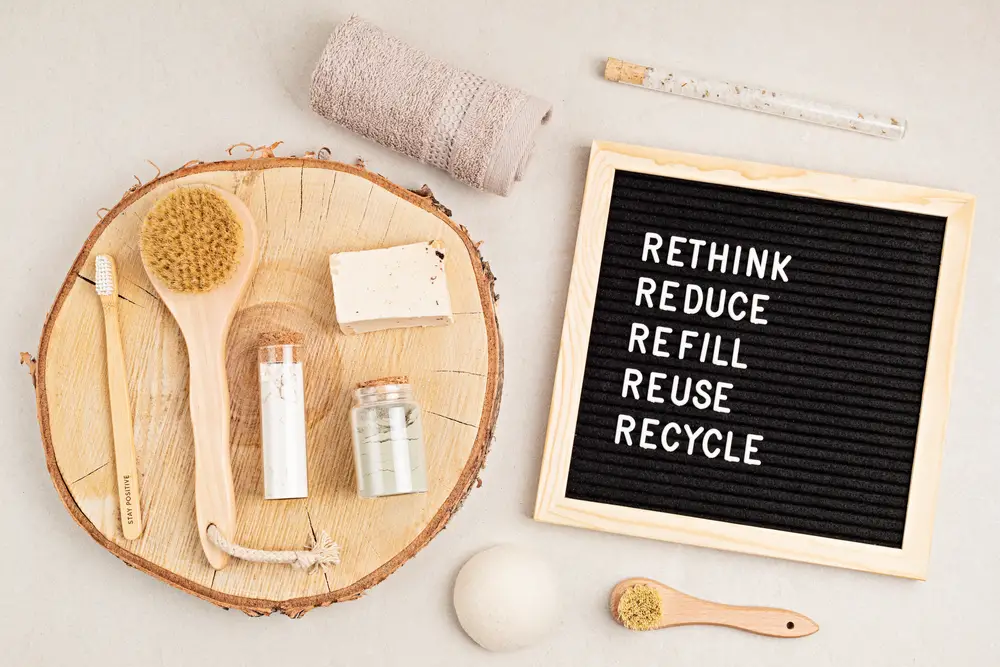
Beauty products often come in plastic containers, contributing significantly to plastic waste. Switching to refillable beauty products can drastically minimize your environmental footprint. Many brands now offer refillable options for items like shampoo, conditioner, and lotions. These products are designed to be reused multiple times, reducing the need for single-use plastic containers. Plus, they often come in stylish, reusable packaging that looks great on your bathroom shelf.
Refillable beauty products are not only better for the environment but can also be more economical. By purchasing refills, you save money and reduce the number of new bottles produced. Many companies also offer incentives or discounts for returning their containers for refills. This small change in your beauty routine can contribute to a significant reduction in plastic waste. By opting for refillable products, you’re supporting a more sustainable beauty industry.
5. Compostable Cutlery
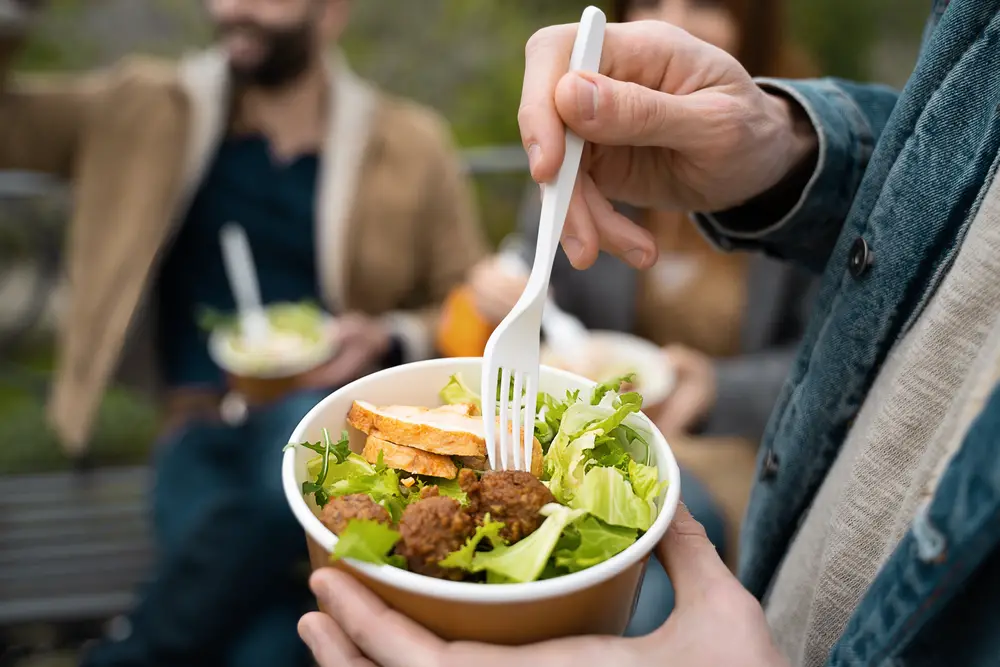
Disposable plastic cutlery is convenient but ends up polluting our oceans. An alternative to this is compostable cutlery made from materials like cornstarch or bamboo. According to a report by the Waste and Resources Action Programme (WRAP), compostable cutlery can significantly reduce the amount of plastic pollution when disposed of properly. These eco-friendly utensils break down more quickly than plastic, preventing them from becoming a long-term environmental hazard. Ideal for picnics, parties, or takeout, compostable cutlery is a simple way to make your meals more sustainable.
Unlike plastic, compostable cutlery doesn’t linger in the environment for centuries. It offers the same convenience without the guilt of contributing to marine pollution. Keep a set in your bag or car, so you’re always prepared for a meal on the go. By choosing compostable options, you’re playing a part in reducing the demand for single-use plastics. It’s a small step that leads to a big change in preserving marine life.
6. Beeswax Wraps
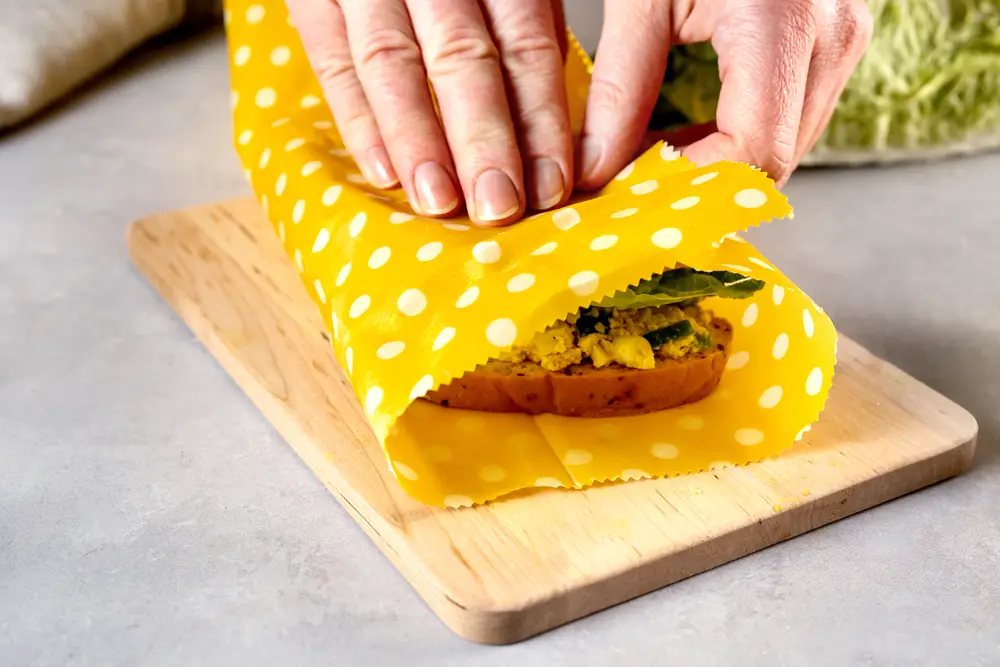
Plastic wrap is commonly used in kitchens but is highly detrimental to marine environments. Making the switch to beeswax wraps can be a game-changer for eco-conscious households. Beeswax wraps are reusable, washable, and can be used to wrap sandwiches, cover bowls, or store leftovers. They are made from natural materials and can last up to a year with proper care. Not only do they reduce plastic waste, but they also keep your food fresh with their natural antibacterial properties.
Using beeswax wraps is simple and practical for everyday use. They come in various sizes and patterns, making them both functional and fun. The wraps mold with the warmth of your hands and hold their shape once cooled, providing a secure seal. Beeswax wraps can be easily cleaned with cold water and mild soap, making them a convenient choice for busy kitchens. By incorporating beeswax wraps into your routine, you’re taking a proactive step in reducing plastic waste and protecting marine life.
7. Glass Food Storage Containers
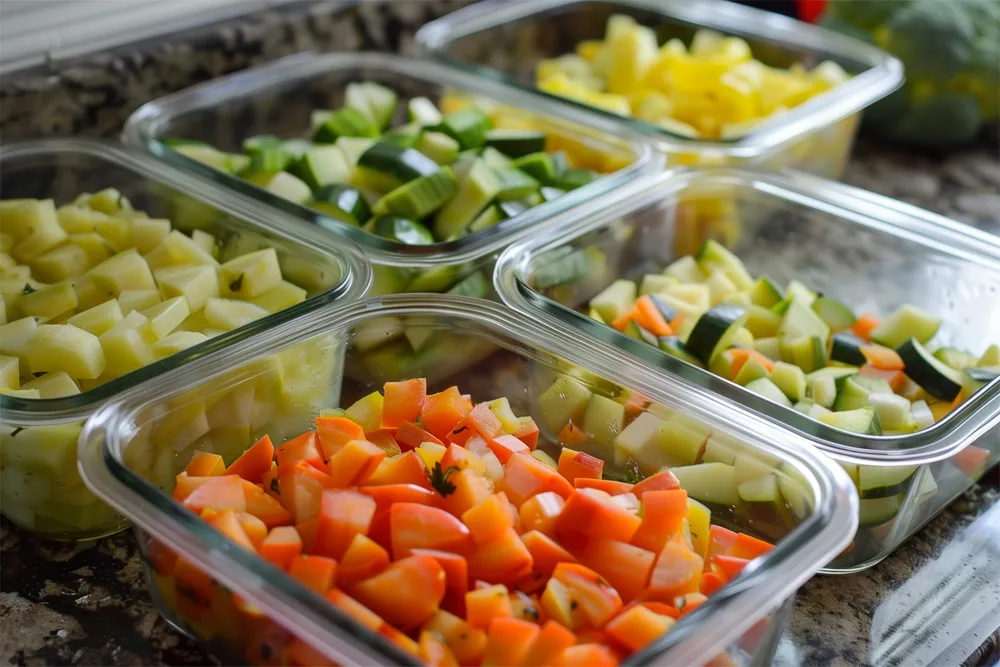
Switching from plastic to glass food storage containers is a responsible choice for both your health and the environment. Glass containers do not leach harmful chemicals into your food, unlike some plastics. According to a study by the University of Exeter, certain plastics can release endocrine-disrupting chemicals into food, raising health concerns. Glass is a safer alternative that’s also more sustainable because it can be recycled indefinitely. By choosing glass, you reduce the demand for plastic and help decrease the amount of waste in our oceans.
Glass containers are versatile and can be used in the oven, microwave, or dishwasher without degrading. They are durable and can withstand high temperatures, making them ideal for various cooking needs. Their transparency allows you to easily see the contents, reducing food waste by keeping you aware of what needs to be used. While the initial investment may be higher, the longevity and benefits of glass containers make them a worthwhile swap. By making this change, you’re contributing to a healthier planet and a healthier you.
8. Reusable Coffee Cups

For coffee lovers, disposable cups are a hidden source of plastic waste. Switching to a reusable coffee cup reduces this impact significantly. Many disposable cups contain a plastic lining that makes them difficult to recycle. By bringing your own reusable cup, you reduce the demand for disposable options and help minimize waste. Plus, many coffee shops offer discounts for bringing your own cup, making it an economical choice as well.
Reusable coffee cups come in various materials like stainless steel, glass, or bamboo, providing options for every preference. They’re designed to keep your beverages hot or cold for longer periods, enhancing your drinking experience. With a range of sizes and styles, you can find a cup that fits your lifestyle and personal taste. Keeping a reusable cup in your bag or car makes it easy to make the switch. By using a reusable coffee cup, you’re making a positive impact on the environment one sip at a time.
9. Silicone Baking Mats
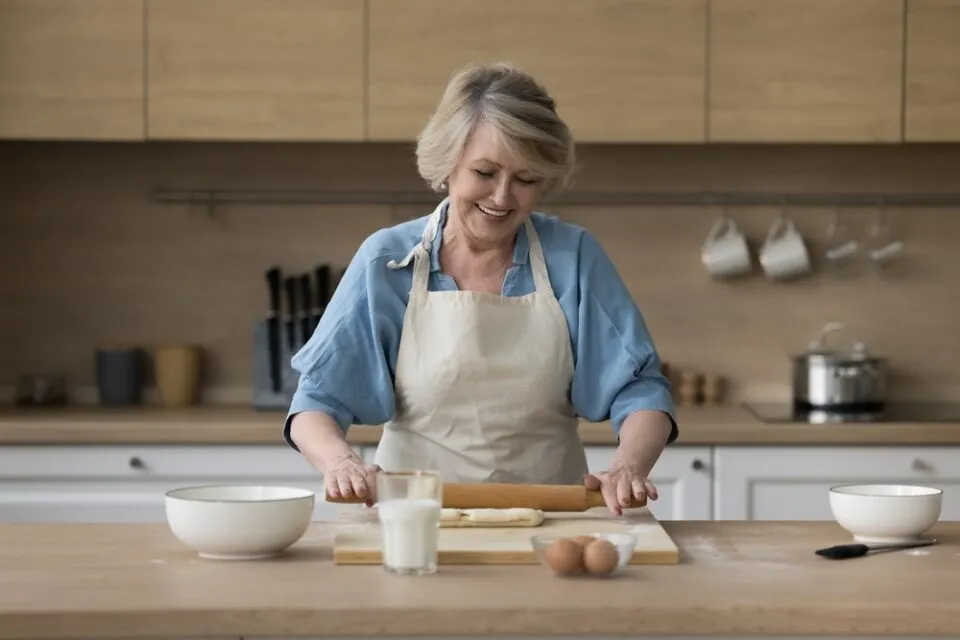
Baking often involves the use of parchment paper or aluminum foil, which can contribute to waste. Silicone baking mats are a reusable alternative that reduces the need for single-use liners. These mats are non-stick and easy to clean, making baking more efficient and environmentally friendly. They can be used for baking cookies, roasting vegetables, or even rolling out dough. By switching to silicone baking mats, you decrease the amount of waste you produce in the kitchen.
Silicone mats are durable and can withstand high temperatures, making them a versatile addition to any kitchen. They provide even heat distribution for better baking results and can be used in the oven, microwave, or freezer. Once your cooking is done, they can be easily washed and reused for your next culinary adventure. This simple switch reduces your reliance on disposable kitchen items, helping to minimize waste. By incorporating silicone baking mats into your routine, you’re taking a step towards more sustainable cooking practices.
10. Rechargeable Batteries
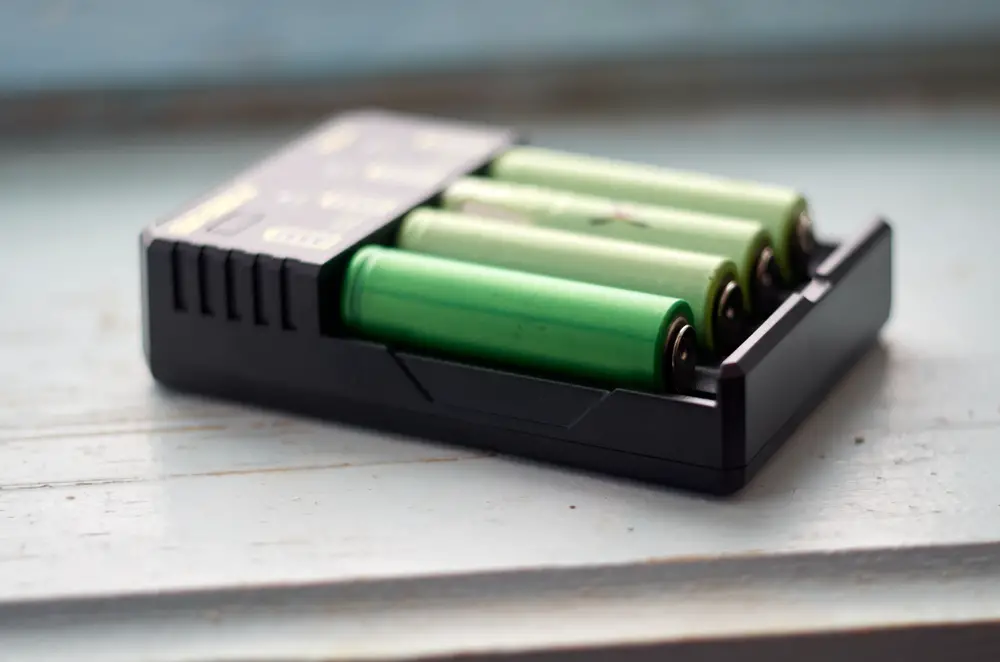
Disposable batteries contribute to plastic waste and contain harmful chemicals that can leach into the environment. Switching to rechargeable batteries is a more sustainable option that reduces this impact. Rechargeable batteries can be used multiple times, saving you money and reducing waste. They are available in various sizes, compatible with most household devices. By choosing rechargeable batteries, you decrease the demand for disposable options and help preserve the environment.
Rechargeable batteries are convenient and easy to use, often coming with a charger to keep them powered up. They provide consistent performance and can be used in everything from toys to remote controls. Over time, the cost savings from using rechargeable batteries can be significant. This switch not only benefits the environment but also your wallet. By opting for rechargeable batteries, you’re making a conscious choice to reduce waste and promote sustainability.
11. Wooden Hairbrushes

Plastic hairbrushes are a common household item that contributes to plastic waste. Choosing a wooden hairbrush is an eco-friendly alternative that offers several benefits. Wooden brushes are biodegradable and often come with natural bristles that are gentler on your hair and scalp. They help distribute natural oils more evenly, promoting healthier hair. By making this switch, you reduce your plastic footprint and enjoy a better haircare experience.
Wooden hairbrushes are durable and can last for years with proper care. They are available in various shapes and sizes, catering to different hair types and styling needs. The natural materials used in wooden brushes make them a sustainable choice that supports a healthier environment. While they may have a higher upfront cost, their longevity and benefits make them a worthwhile investment. By opting for a wooden hairbrush, you’re contributing to a reduction in plastic waste and supporting a more sustainable future.
12. Eco-Friendly Dental Products

The dental care industry is another area where plastic waste is prevalent. Switching to eco-friendly dental products can significantly reduce your environmental impact. Bamboo toothbrushes, for example, are biodegradable and a popular alternative to plastic ones. Many brands also offer natural toothpaste in recyclable packaging, reducing the amount of waste generated. By making these changes, you’re supporting a more sustainable approach to oral hygiene.
Eco-friendly dental products are designed to be just as effective as traditional ones. Bamboo toothbrushes are durable and can last as long as plastic ones, providing a similar level of dental care. Natural toothpaste options often contain fewer chemicals, offering a healthier choice for both you and the environment. These small changes in your dental routine can add up to make a big difference. By choosing eco-friendly dental products, you’re taking a step towards reducing plastic waste and promoting sustainability.
13. Plastic-Free Cleaning Supplies

Cleaning supplies often come in plastic bottles and contain harmful chemicals that can end up in waterways. Switching to plastic-free cleaning options is a simple way to reduce your environmental impact. Many brands offer concentrated cleaning solutions in glass or metal containers, minimizing plastic waste. These solutions can be diluted with water and used with reusable spray bottles, offering a sustainable cleaning alternative. By making these changes, you’re supporting a cleaner, healthier environment.
Plastic-free cleaning products are effective and often use natural ingredients, reducing exposure to harsh chemicals. They come in a variety of scents and formulations, catering to different cleaning needs and preferences. Reusable cleaning cloths or sponges can further reduce waste, replacing disposable paper towels or wipes. By incorporating plastic-free cleaning supplies into your routine, you’re taking a proactive step in reducing plastic pollution. This simple swap makes a big impact on the health of our planet and its marine life.
